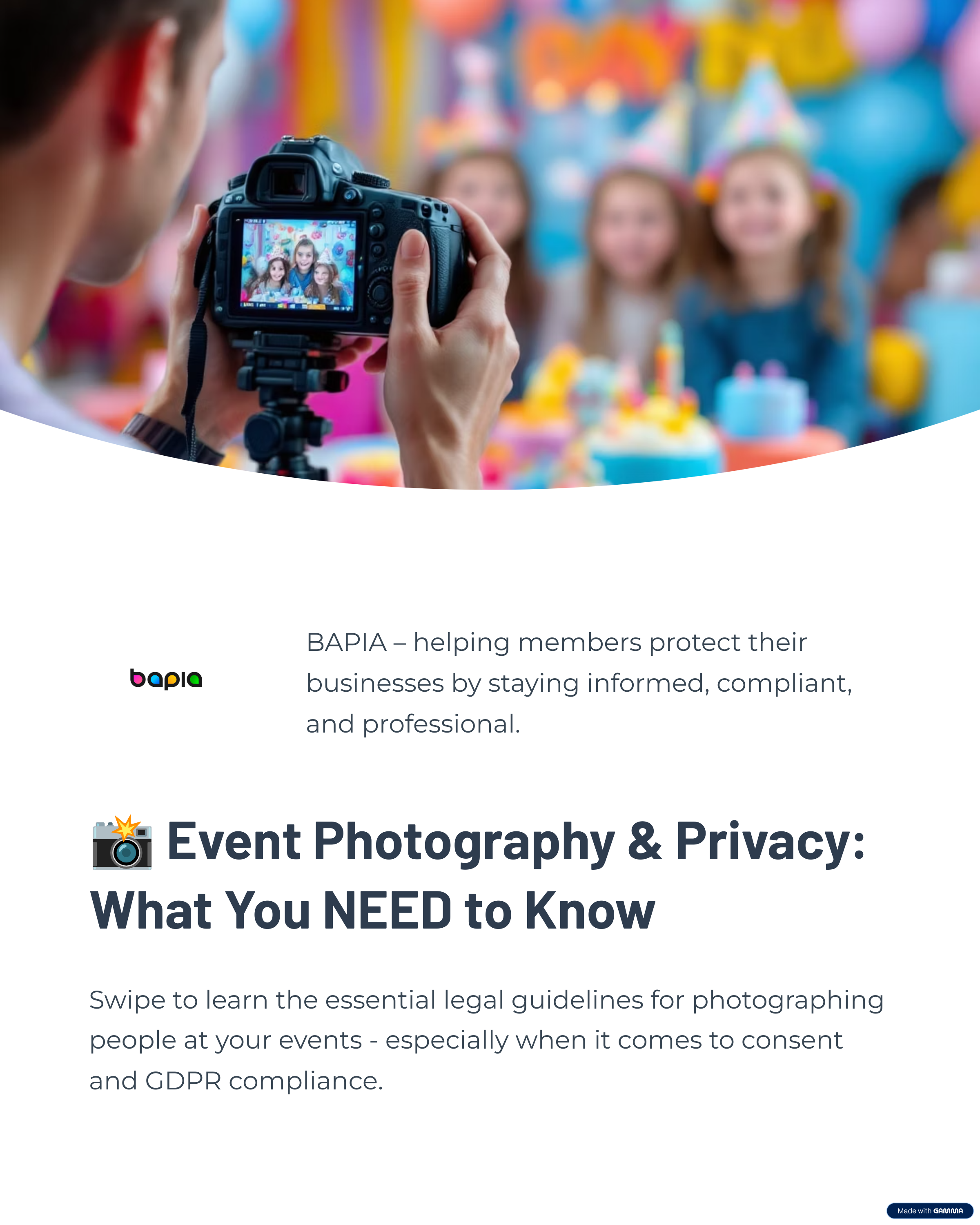PHOTOGRAPHING PEOPLE AT EVENTS:
What Party Professionals Need to Know About Consent & GDPR
When it comes to photographing people at events (especially children) for your portfolio, website, or social media, there are important legal and ethical guidelines to follow.
Whether you’re a face painter, balloon decorator, hire company, entertainer, influencer or an educator, it’s essential to understand how privacy laws affect your business, particularly in the UK where GDPR compliance is a legal requirement.
Here’s a simple breakdown of what you need to know to stay professional, respectful, and legally compliant:
Consent Is Key
Adults
Even though someone may be happy for you to take their picture, you still need permission to use it for public or commercial purposes (such as on social media, in your marketing and even educational materials). Ideally, this should be written consent.
Children
If your photo subject is under 18, you MUST get consent from a parent or legal guardian — especially before publishing the image online or using it to promote your services.
Use a Photo/Media Consent Form
To protect yourself and your business, particularly if you're posting online or using images in printed materials:
Ask parents/guardians to sign a media consent form.
Your form should include:
Who is being photographed.
How and where the images will be used (social media, flyers, website, etc.).
A clause explaining they can withdraw consent at any time.
This is not just good practice — it’s essential for GDPR compliance in the UK.
You can find a downloadable and editable template of a Media consent form in the BAPIA Members Resource area
Private vs. Public Places
Private Events (e.g. parties or bookings):
You need the host or organiser’s permission to take photos, and individual consent to share them publicly.
Public Events (e.g. community fairs, carnivals, festivals etc):
You may be allowed to take photos, but if individuals are identifiable, you still need consent to use them commercially.
What Not to Do
Don’t post close-ups of children’s faces without permission.
Don’t assume that being in a public place means free use of someone’s image.
Don’t share identifiable images of people without proper consent — even a smile in the background can be a breach.
Best Practices for Event Professionals
Display a polite sign near your setup or stall, such as:
“Photos and videos may be taken during this event. Please let us know if you do not wish to be photographed.”If consent isn’t given, consider:
Taking over-the-shoulder shots
Cropping out faces
Blurring identifiable features
Focus on the design itself (balloon design, prop etc) when possible, rather than the person.
What About GDPR?
In the UK, photographs are considered personal data under the General Data Protection Regulation (GDPR) — especially when they clearly identify someone.
Here’s what that means for you:
How to Be GDPR Compliant
1. Lawful Basis – Consent
Consent is the most appropriate lawful basis for collecting and using images. A signed media release form helps document this.
2. Transparency
Your media form should clearly state:
What the photos will be used for.
That consent is voluntary.
That consent can be withdrawn at any time.
3. Data Minimisation
Only take the photos you need. Avoid unnecessary crowd shots or storing extra images you won’t use.
4. Secure Storage
Keep images securely stored — password-protected folders, secure cloud services, and offline backups.
Set a clear retention policy
for example:“Images will be stored for up to 3 years unless consent is withdrawn.”
5. Right to Withdraw
Anyone can ask you to remove their image — and you must comply! Make sure you have an easy process (like via email) for this.
Special Category Data (Use with Caution)
If a photo shows sensitive information (e.g., a visible disability or religious context), it could be considered special category data and needs even more protection and justification.
In Summary:
You're Doing It Right If...
By using a clear media consent form and following GDPR best practices that:
Requests explicit, informed consent
Gives people a clear choice to opt in or out
Explains usage, storage, and their right to withdraw
Means you are aligning your business with UK GDPR standards and showing that you take privacy and professionalism seriously.
Whether you’re snapping pics of face painting, balloon arches, or happy customers enjoying your work, remember:
A little care and consent go a long way. It builds trust with your audience — and keeps your business safe, professional, and ethical.
Download Free Media Consent & Release Form

